And a very happy Free For All Birthday Wish to Japanese novelist and poet Natsume Sōseki!
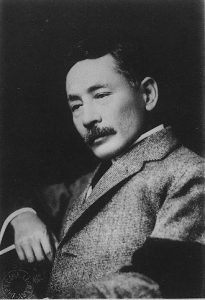
Natsume was born in 1867 in Babashita, in the Edo region of Japan. His birth was not planned, and, as the sixth child in the family, his arrival placed financial and social strains on his parents. As a result, Natsume was adopted in 1868 by a childless couple who raised him until the age of nine, when the couple divorced.
Natsume dreamed of becoming a writer from an early age, but his family strongly disapproved of his choice, and he went to University with the intention of becoming an architect. His writing dreams did not die, however, and Natsume not only developed his prose writing while at university, but also received tutoring in the art of composing haiku. From this point on, he began signing his poems with the name Sōseki, which is a Chinese idiom meaning “stubborn”. In 1890, he entered the English Literature department, quickly mastered the English language, and began working as a teacher.
In 1900, the Japanese government sent him to study in Great Britain as “Japan’s first Japanese English literary scholar”. Natsume had a terrible time in London, and spent most days inside reading. By the time he returned to Japan, it was with a renewed confidence in his English-language abilities, and even more insight to begin writing. Sōseki’s literary career began in 1903, when he began to contribute haiku and other verses to literary magazine. However, it was the public success of his satirical novel I Am a Cat in 1905 that won him wide public admiration, and he became a full-time writer soon after. Sōseki is generally considered to be one of the most influential modern Japanese writers, writing one novel a year before his death from a stomach ulcer in 1916. From 1984 until 2004, his portrait appeared on the front of the Japanese 1000 yen note. Below are two of his haiku, traditional Japanese verses that consist of three lines of 5 syllables, 7 syllables, and 5 syllables:
Over the wintry
forest, winds howl in rage
with no leaves to blow.
Now gathering,
Now scattering,
Fireflies over the river.
And now, on to the books!

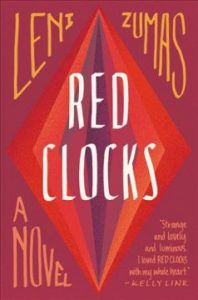 Red Clocks: Fans of Margaret Atwood, and the television adaptation of The Handmaid’s Tale or Alias Grace should definitely have Leni Zumas’ hugely anticipated and celebrated book on their radar. Set in a future United States where abortion is totally illegal, this book focuses on five women in a small Oregon fishing town, who are all grappling with the new laws alongside age-old questions surrounding motherhood, identity, and freedom. Ro, a single high-school teacher, is trying to have a baby on her own, while also writing a biography of Eivør, a little-known 19th-century female polar explorer. Susan is a frustrated mother of two, trapped in a crumbling marriage. Mattie is the adopted daughter of doting parents and one of Ro’s best students, who finds herself pregnant with nowhere to turn. And Gin is the gifted, forest-dwelling herbalist, or “mender,” who brings all their fates together when she’s arrested and put on trial in a frenzied modern-day witch hunt. This book has been getting rave reviews from critics and readers alike, and making a number of “Best Of” lists already. The Chicago Tribune described the book as “indespensible”, and wrote in its review, “Wry and urgent, defiant and stylish, Zumas’ braided tale follows the intertwined fates of four women whose lives this law irrevocably alters….Lit up with verbal pyrotechnics and built with an admirably balanced structure, Red Clocks is undeniably gorgeously written.”
Red Clocks: Fans of Margaret Atwood, and the television adaptation of The Handmaid’s Tale or Alias Grace should definitely have Leni Zumas’ hugely anticipated and celebrated book on their radar. Set in a future United States where abortion is totally illegal, this book focuses on five women in a small Oregon fishing town, who are all grappling with the new laws alongside age-old questions surrounding motherhood, identity, and freedom. Ro, a single high-school teacher, is trying to have a baby on her own, while also writing a biography of Eivør, a little-known 19th-century female polar explorer. Susan is a frustrated mother of two, trapped in a crumbling marriage. Mattie is the adopted daughter of doting parents and one of Ro’s best students, who finds herself pregnant with nowhere to turn. And Gin is the gifted, forest-dwelling herbalist, or “mender,” who brings all their fates together when she’s arrested and put on trial in a frenzied modern-day witch hunt. This book has been getting rave reviews from critics and readers alike, and making a number of “Best Of” lists already. The Chicago Tribune described the book as “indespensible”, and wrote in its review, “Wry and urgent, defiant and stylish, Zumas’ braided tale follows the intertwined fates of four women whose lives this law irrevocably alters….Lit up with verbal pyrotechnics and built with an admirably balanced structure, Red Clocks is undeniably gorgeously written.”
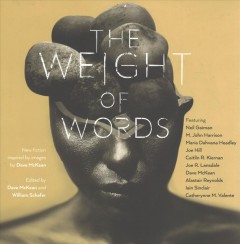 The Weight of Words: The artistry of Graphic Artist, Illustrator, Filmmaker and Musician Dave McKean has permeated popular culture for more than thirty years. His images, at once bizarre, beautiful, and instantly recognizable, have graced an impressive array of books, CDs, graphic novels, and films. In this collection, ten contemporary storytellers, including Neil Gaiman, Joe R. Lansdale, and Caitlin R. Kiernan, as well as McKean himself, have created a series of varied, compelling narratives, each inspired by one of McKean’s extraordinary paintings. The result is a unique collaborative effort in which words and pictures enhance and illuminate each other on page after page. This is one of those fascinating anthologies that really does offer something for everyone. Its complementary merger of words and images adds up to something special that will engage readers and artists alike. Publisher’s Weekly gave this wonderful collection a starred review, noting that “even the least satisfying parts of this astonishing book are entirely readable, and the text plays beautifully against McKean’s gorgeously reproduced illustrations.”
The Weight of Words: The artistry of Graphic Artist, Illustrator, Filmmaker and Musician Dave McKean has permeated popular culture for more than thirty years. His images, at once bizarre, beautiful, and instantly recognizable, have graced an impressive array of books, CDs, graphic novels, and films. In this collection, ten contemporary storytellers, including Neil Gaiman, Joe R. Lansdale, and Caitlin R. Kiernan, as well as McKean himself, have created a series of varied, compelling narratives, each inspired by one of McKean’s extraordinary paintings. The result is a unique collaborative effort in which words and pictures enhance and illuminate each other on page after page. This is one of those fascinating anthologies that really does offer something for everyone. Its complementary merger of words and images adds up to something special that will engage readers and artists alike. Publisher’s Weekly gave this wonderful collection a starred review, noting that “even the least satisfying parts of this astonishing book are entirely readable, and the text plays beautifully against McKean’s gorgeously reproduced illustrations.”
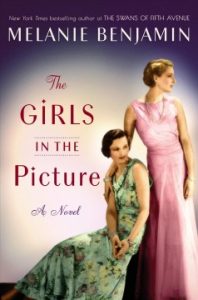 The Girls in the Picture: In this sweeping and insightful historical novel, Melanie Benjamin has given us moving story of the friendship and creative partnership between two of Hollywood’s earliest female legends—screenwriter Frances Marion and superstar Mary Pickford. It is 1914, and twenty-five-year-old Frances Marion has left her (second) husband and her Northern California home for the lure of Los Angeles, where she is determined to live independently as an artist. But Los Angeles is swiftly becoming the home of the “flickers,” moving pictures that bring stories to life. In this fledgling industry, Frances finds her true calling: writing stories for this wondrous new medium. She also makes the acquaintance of actress Mary Pickford, whose signature golden curls and lively spirit have earned her the title “America’s Sweetheart.” The two ambitious young women hit it off instantly, their kinship fomented by their mutual fever to create, to move audiences to a frenzy, to start a revolution. As these two friends navigate their way through an industry already prejudiced against them because of their gender, yet eager to cash in on their talent and glamour, both Mary and Frances will discover the cost–and rewards–of fame. With cameos from such notables as Charlie Chaplin, Louis B. Mayer, Rudolph Valentino, and Lillian Gish, this is a book that will appeal to classic movie buffs as much as it will fans of historic fiction and women’s history. NPR provided a glowing review of this book, saying “One of the pleasures of The Girls in the Picture its no-males-necessary alliance of two determined females—#TimesUp before its time. . . . Inspiration is a rare and unexpected gift in a book filled with the fluff of Hollywood, but Benjamin provides it…”
The Girls in the Picture: In this sweeping and insightful historical novel, Melanie Benjamin has given us moving story of the friendship and creative partnership between two of Hollywood’s earliest female legends—screenwriter Frances Marion and superstar Mary Pickford. It is 1914, and twenty-five-year-old Frances Marion has left her (second) husband and her Northern California home for the lure of Los Angeles, where she is determined to live independently as an artist. But Los Angeles is swiftly becoming the home of the “flickers,” moving pictures that bring stories to life. In this fledgling industry, Frances finds her true calling: writing stories for this wondrous new medium. She also makes the acquaintance of actress Mary Pickford, whose signature golden curls and lively spirit have earned her the title “America’s Sweetheart.” The two ambitious young women hit it off instantly, their kinship fomented by their mutual fever to create, to move audiences to a frenzy, to start a revolution. As these two friends navigate their way through an industry already prejudiced against them because of their gender, yet eager to cash in on their talent and glamour, both Mary and Frances will discover the cost–and rewards–of fame. With cameos from such notables as Charlie Chaplin, Louis B. Mayer, Rudolph Valentino, and Lillian Gish, this is a book that will appeal to classic movie buffs as much as it will fans of historic fiction and women’s history. NPR provided a glowing review of this book, saying “One of the pleasures of The Girls in the Picture its no-males-necessary alliance of two determined females—#TimesUp before its time. . . . Inspiration is a rare and unexpected gift in a book filled with the fluff of Hollywood, but Benjamin provides it…”
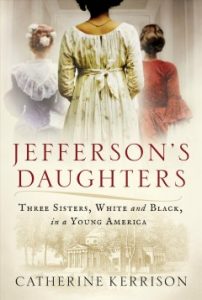 Jefferson’s Daughters: Three Sisters, White and Black, in a Young America: Thomas Jefferson had three daughters: Martha and Maria by his wife, Martha Wayles Jefferson, and Harriet by his slave Sally Hemings. In this groundbreaking history, Catherine Kerrison, a scholar of early American and women’s history, recounts the remarkable journey of these three women—and how their struggle to define themselves reflects both the possibilities and the limitations that resulted from the American Revolution. Although the three women shared a father, the similarities end there. Martha and Maria received a fine convent school education while they lived with their father during his diplomatic posting in Paris. Harriet Hemings followed a different path. She escaped slavery—apparently with the assistance of Jefferson himself. Leaving Monticello behind, she boarded a coach and set off for a decidedly uncertain future. For this groundbreaking triple biography, Kerrison has uncovered never-before-published documents written by the Jefferson sisters when they were in their teens, as well as letters written by members of the Jefferson and Hemings families. The eventful lives of Thomas Jefferson’s daughters provide a unique vantage point from which to examine the complicated patrimony of the American Revolution itself. The richly interwoven story of these three strong women and their fight to shape their own destinies sheds new light on the ongoing movement toward human rights in America—and on the personal and political legacy of one of our most controversial “Founding Fathers”. The USA Today wrote a beautiful review of this book, saying, in part, ” The most poignant literature gives a voice to the voiceless. And. . . Catherine Kerrison tells us the stories of three of Thomas Jefferson’s children, who, due to their gender or race, lived lives whose most intimate details are lost to time. . . . A highlight of Kerrison’s work is that while noting the gender constraints that hemmed in white women, she does not sugarcoat their privileged status, nor deny their racism. . . . A historical narrative that allows us to reflect on the thoughts, fears and motivations of three women…[and] offers a fascinating glimpse of where we have been as a nation. It is a vivid reminder of both the ties that bind, and the artificial boundaries that painfully divide us.”
Jefferson’s Daughters: Three Sisters, White and Black, in a Young America: Thomas Jefferson had three daughters: Martha and Maria by his wife, Martha Wayles Jefferson, and Harriet by his slave Sally Hemings. In this groundbreaking history, Catherine Kerrison, a scholar of early American and women’s history, recounts the remarkable journey of these three women—and how their struggle to define themselves reflects both the possibilities and the limitations that resulted from the American Revolution. Although the three women shared a father, the similarities end there. Martha and Maria received a fine convent school education while they lived with their father during his diplomatic posting in Paris. Harriet Hemings followed a different path. She escaped slavery—apparently with the assistance of Jefferson himself. Leaving Monticello behind, she boarded a coach and set off for a decidedly uncertain future. For this groundbreaking triple biography, Kerrison has uncovered never-before-published documents written by the Jefferson sisters when they were in their teens, as well as letters written by members of the Jefferson and Hemings families. The eventful lives of Thomas Jefferson’s daughters provide a unique vantage point from which to examine the complicated patrimony of the American Revolution itself. The richly interwoven story of these three strong women and their fight to shape their own destinies sheds new light on the ongoing movement toward human rights in America—and on the personal and political legacy of one of our most controversial “Founding Fathers”. The USA Today wrote a beautiful review of this book, saying, in part, ” The most poignant literature gives a voice to the voiceless. And. . . Catherine Kerrison tells us the stories of three of Thomas Jefferson’s children, who, due to their gender or race, lived lives whose most intimate details are lost to time. . . . A highlight of Kerrison’s work is that while noting the gender constraints that hemmed in white women, she does not sugarcoat their privileged status, nor deny their racism. . . . A historical narrative that allows us to reflect on the thoughts, fears and motivations of three women…[and] offers a fascinating glimpse of where we have been as a nation. It is a vivid reminder of both the ties that bind, and the artificial boundaries that painfully divide us.”
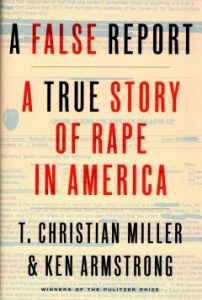 A False Report: A True Story of Rape in America: On August 11, 2008, eighteen-year-old Marie reported that a masked man broke into her apartment near Seattle, Washington, and raped her. Within days police and even those closest to Marie became suspicious of her story. The police swiftly pivoted and began investigating Marie. Confronted with inconsistencies in her story and the doubts of others, Marie broke down and said her story was a lie—a bid for attention. Police charged Marie with false reporting, and she was branded a liar. More than two years later, Colorado detective Stacy Galbraith was assigned to investigate a case of sexual assault. Describing the crime to her husband that night, Galbraith learned that the case bore an eerie resemblance to a rape that had taken place months earlier in a nearby town. She joined forces with the detective on that case, Edna Hendershot, and the two soon discovered they were dealing with a serial rapist: a man who photographed his victims, threatening to release the images online, and whose calculated steps to erase all physical evidence suggested he might be a soldier or a cop. Through meticulous police work the detectives would eventually connect the rapist to other attacks in Colorado—and beyond. This book, by Pulitzer-Prize-winning journalists by T. Christian Miller and Ken Armstrong, is the story of that case and the hunt for justice, that confronts the disturbing truth of how sexual assault is investigated today—and the long history of skepticism toward rape victims. Though unsettling, certainly upsetting, and by no means an easy read, this book is timely, informative, and deeply necessary for the way it shines a light not only on the prosecution of rape, but also how we as the general public consider these cases today. Kirkus Reviews agreed, calling it “Chilling…The authors display meticulous investigative reporting skills… A riveting and disturbing true-crime story that reflects the enduring atrocity of rape in America.”
A False Report: A True Story of Rape in America: On August 11, 2008, eighteen-year-old Marie reported that a masked man broke into her apartment near Seattle, Washington, and raped her. Within days police and even those closest to Marie became suspicious of her story. The police swiftly pivoted and began investigating Marie. Confronted with inconsistencies in her story and the doubts of others, Marie broke down and said her story was a lie—a bid for attention. Police charged Marie with false reporting, and she was branded a liar. More than two years later, Colorado detective Stacy Galbraith was assigned to investigate a case of sexual assault. Describing the crime to her husband that night, Galbraith learned that the case bore an eerie resemblance to a rape that had taken place months earlier in a nearby town. She joined forces with the detective on that case, Edna Hendershot, and the two soon discovered they were dealing with a serial rapist: a man who photographed his victims, threatening to release the images online, and whose calculated steps to erase all physical evidence suggested he might be a soldier or a cop. Through meticulous police work the detectives would eventually connect the rapist to other attacks in Colorado—and beyond. This book, by Pulitzer-Prize-winning journalists by T. Christian Miller and Ken Armstrong, is the story of that case and the hunt for justice, that confronts the disturbing truth of how sexual assault is investigated today—and the long history of skepticism toward rape victims. Though unsettling, certainly upsetting, and by no means an easy read, this book is timely, informative, and deeply necessary for the way it shines a light not only on the prosecution of rape, but also how we as the general public consider these cases today. Kirkus Reviews agreed, calling it “Chilling…The authors display meticulous investigative reporting skills… A riveting and disturbing true-crime story that reflects the enduring atrocity of rape in America.”
Until next week, beloved patrons….Happy reading!
 I continue to wonder how these intrepid companies got my email in the first place. I’m generally very careful about who I give my email address to. Unfortunately, there are several ways a company can get your email address. Usually, it involves them buying your email address from a company that you thought would be trustworthy. My best guess for how I keep getting these emails is that a certain sports newsletter I signed up for several months ago sold my email address to a few companies. They in turn, sold my email address to yet more companies. The cycle goes on and on. In other words, I have a problem that 51% of email owners have. We receive a part of the 97.4 billion spam emails sent worldwide, each day.
I continue to wonder how these intrepid companies got my email in the first place. I’m generally very careful about who I give my email address to. Unfortunately, there are several ways a company can get your email address. Usually, it involves them buying your email address from a company that you thought would be trustworthy. My best guess for how I keep getting these emails is that a certain sports newsletter I signed up for several months ago sold my email address to a few companies. They in turn, sold my email address to yet more companies. The cycle goes on and on. In other words, I have a problem that 51% of email owners have. We receive a part of the 97.4 billion spam emails sent worldwide, each day.


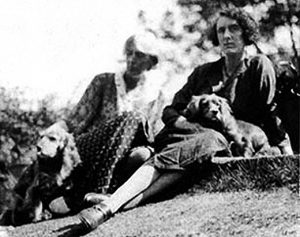
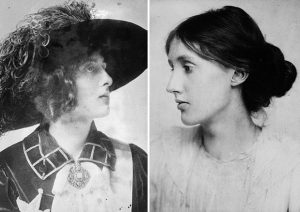
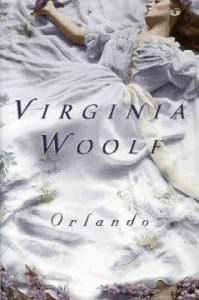 Years later, Virginia would present Vita with her novel
Years later, Virginia would present Vita with her novel 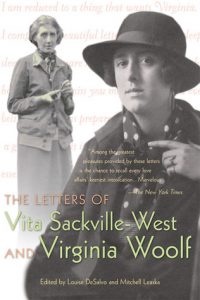
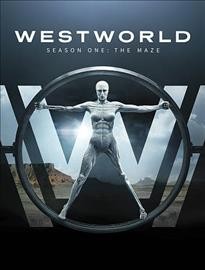
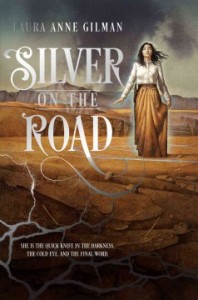
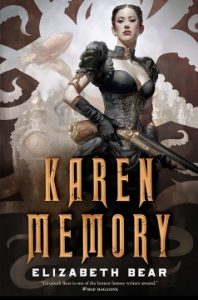
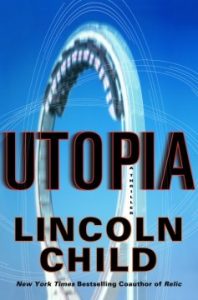
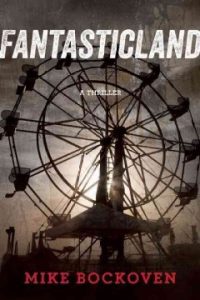
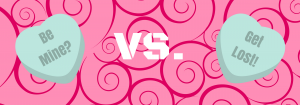
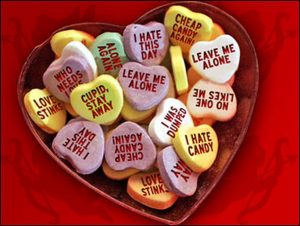







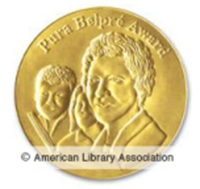
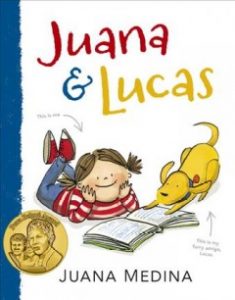
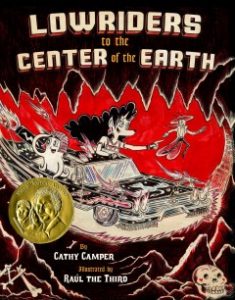
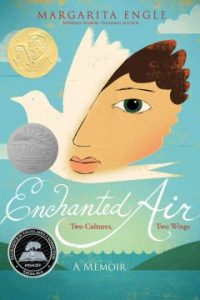
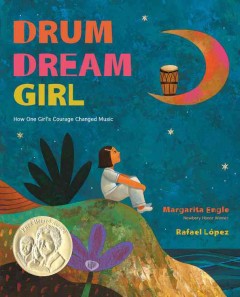

 It’s even more disconcerting to think about what that means culturally and historically. I discuss with my students regularly about the implications of incidents like, for example, Jack the Ripper…the subject of goodness knows how many books, television series, shows, movies, radio plays, stage production, etc. Some are good, some are great, while others are forgettable and regrettable. But they all hinge on the story of a person (or persons) who murdered women who were economically, socially, and physically incapable of defending themselves. Those women are only known to history because they were murdered in brutal fashion. In some cases, the only reason we know what those women look like is from their autopsy photos. Similarly, in the books we read, we meet so very many women only when, or after, they die. Only after they are labeled as a victim. Only after they have suffered. Only because they have suffered. And how does it affect the way we look at actual, real, flesh-and-blood women who are hurt, victimized, or used in the way that fictional characters are?
It’s even more disconcerting to think about what that means culturally and historically. I discuss with my students regularly about the implications of incidents like, for example, Jack the Ripper…the subject of goodness knows how many books, television series, shows, movies, radio plays, stage production, etc. Some are good, some are great, while others are forgettable and regrettable. But they all hinge on the story of a person (or persons) who murdered women who were economically, socially, and physically incapable of defending themselves. Those women are only known to history because they were murdered in brutal fashion. In some cases, the only reason we know what those women look like is from their autopsy photos. Similarly, in the books we read, we meet so very many women only when, or after, they die. Only after they are labeled as a victim. Only after they have suffered. Only because they have suffered. And how does it affect the way we look at actual, real, flesh-and-blood women who are hurt, victimized, or used in the way that fictional characters are?
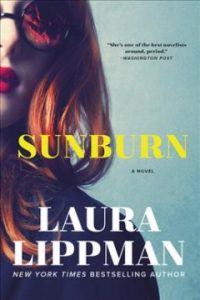 The announcement of the prize has set off quite a bit of debate, not only among mystery writers, but among activists and readers, as well.
The announcement of the prize has set off quite a bit of debate, not only among mystery writers, but among activists and readers, as well. 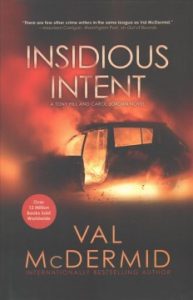 But some authors feel that this award is a form of censorship, both artistically and socially.
But some authors feel that this award is a form of censorship, both artistically and socially.